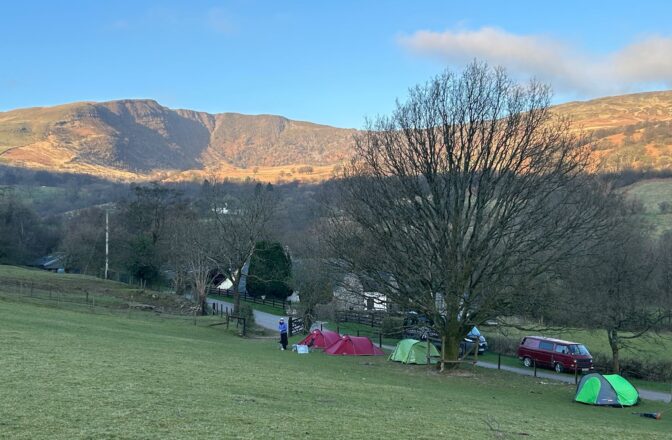DofE Students Shine in the Spring Sunshine
Over the past couple of weeks, Duke of Edinburgh Award students from...
Learn more
10 April 2025
Getting ready for your Duke of Edinburgh’s Award expedition is exciting – the routes, the challenge, the time with friends outdoors. But one thing that can make or break your experience? Your kit.
Packing the right gear – and understanding why it matters – can make your expedition far more enjoyable (and a lot less soggy, sore or cold!). Here’s what you really need to know when getting your kit together.
Let’s start with the most important item – your boots. You’ll be on your feet for hours, walking over uneven ground, carrying a rucksack that weighs a decent chunk of your body weight. That means your boots need to:
Support your ankles – to stop you twisting or rolling them on rough ground.
Have a solid sole – to protect your feet from sharp rocks and give grip on slippery terrain.
Fit well – no rubbing, no blisters. Wear them in before the expedition. Go for walks. Break them in properly.
Cheap or badly fitting boots might be tempting, but you’ll regret it by lunchtime on day one. Trust us.
Even if the forecast is dry, a good set of waterproofs (jacket and trousers) is non-negotiable. Here’s why:
Weather changes fast in the UK – especially in the hills.
Waterproofs trap warmth, so they’re a vital layer in emergencies if someone gets cold or injured.
Keeping dry means staying warm, and staying warm means staying safe.
So yes, even in June, pack them. And make sure they’re properly waterproof – not “water-resistant” or “showerproof”.
You won’t need to carry a hospital in your pack – your supervisor will have the full group kit – but a personal first aid kit is super useful. It should include:
Blister plasters (a DofE must-have!)
A few normal plasters for cuts or scrapes
Antiseptic wipes
Any personal medication you need
This little kit can stop a small issue turning into a big problem. Keeping moving with a blister is miserable, so deal with it early.
A quick note for girls:
Periods can (and do) happen on expedition – even if you weren’t expecting one. It’s completely normal and nothing to be embarrassed about. Just make sure you pack:
Whatever period products you prefer to use
A few extra zip-lock bags (or similar) to keep used products separate and easy to take away with you
A small bottle of hand sanitiser or wipes for when you don’t have access to a loo
Managing your period outdoors is totally doable – it’s just about being prepared. And remember: it happens to lots of people on expedition, and that’s absolutely okay.
It’s not just about wearing waterproofs – it’s about making sure your whole bag system keeps things dry. Here’s how:
Line your rucksack with a sturdy bin liner or dry bag. This is your last line of defence.
Pack key items (like your sleeping bag, warm layers and food) in separate dry bags inside your rucksack.
Don’t rely on your rucksack cover alone – they help, but rain finds its way in. Always double up.
Getting into a dry sleeping bag at the end of the day = happiness. Getting into a wet one = disaster.
Instead of one chunky jumper, go for lots of light layers. Why?
You can adjust your temperature easily as you move.
Layers trap warm air between them, keeping you toasty.
They dry quicker if they get damp.
A good layering system might look like this:
A moisture-wicking base layer (not cotton)
A long-sleeved top
A lightweight fleece
A waterproof jacket on top
Add or take off layers as needed. It’s a flexible system that works in all weathers.
Packing isn’t just a tick-box exercise – it’s part of being expedition ready. Understanding why each item matters helps you look after yourself and your team. And if something unexpected happens (and it might!), you’ll be ready.
Want a hand with kit lists or advice? Wilderness Expertise is always happy to help. We’ve supported thousands of students through their DofE expeditions – and we’ve learned that a well-packed rucksack is worth its weight in gold.